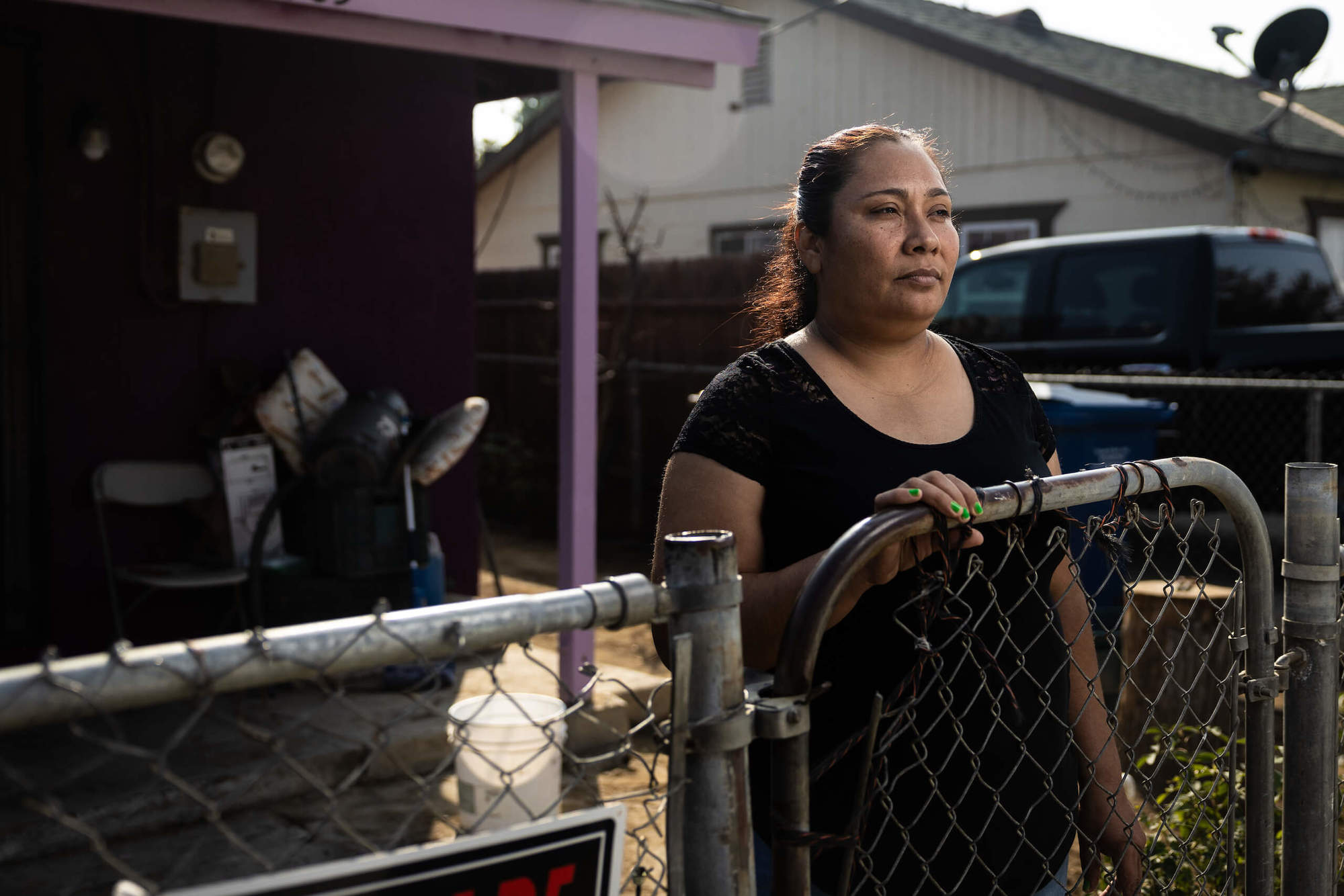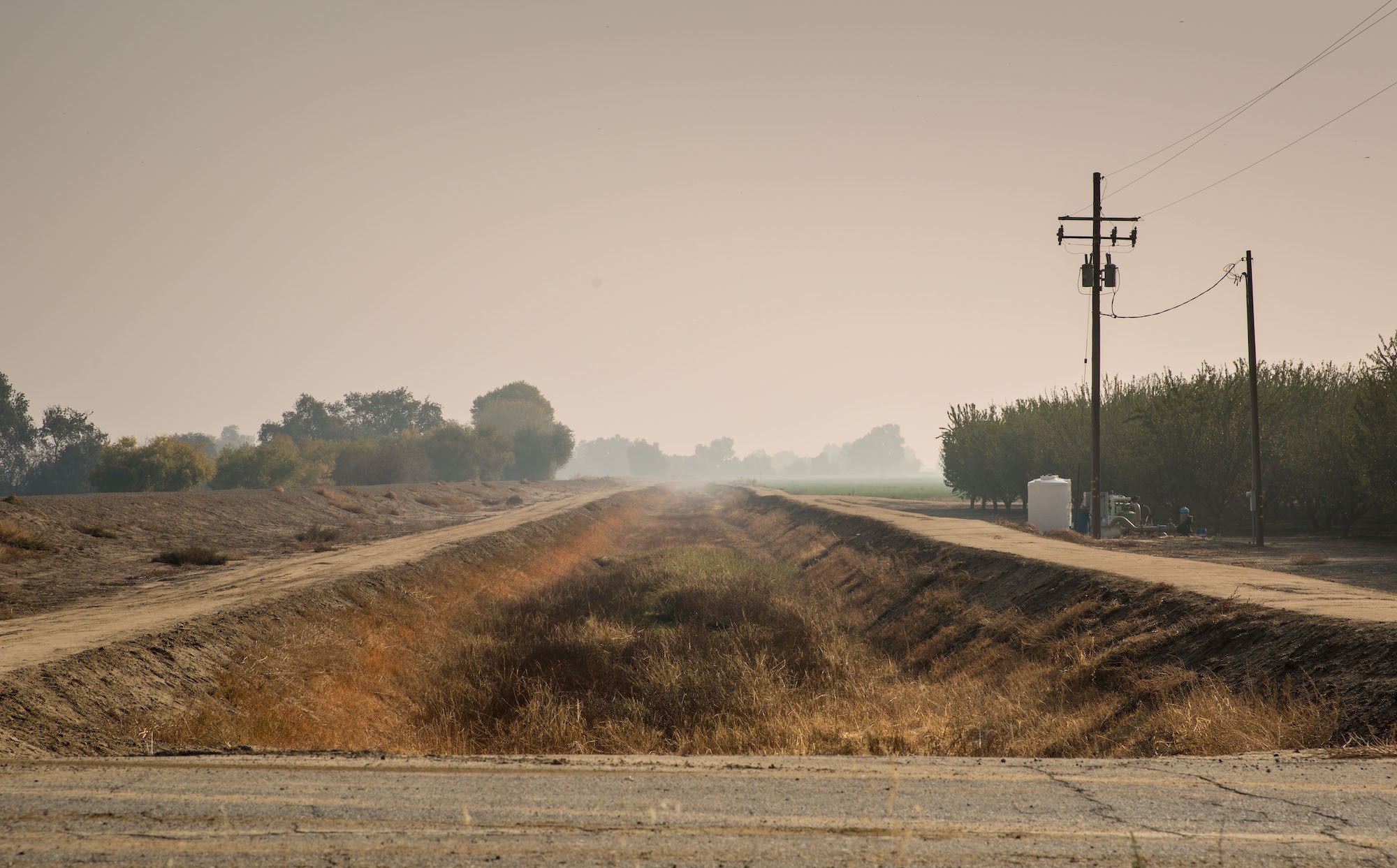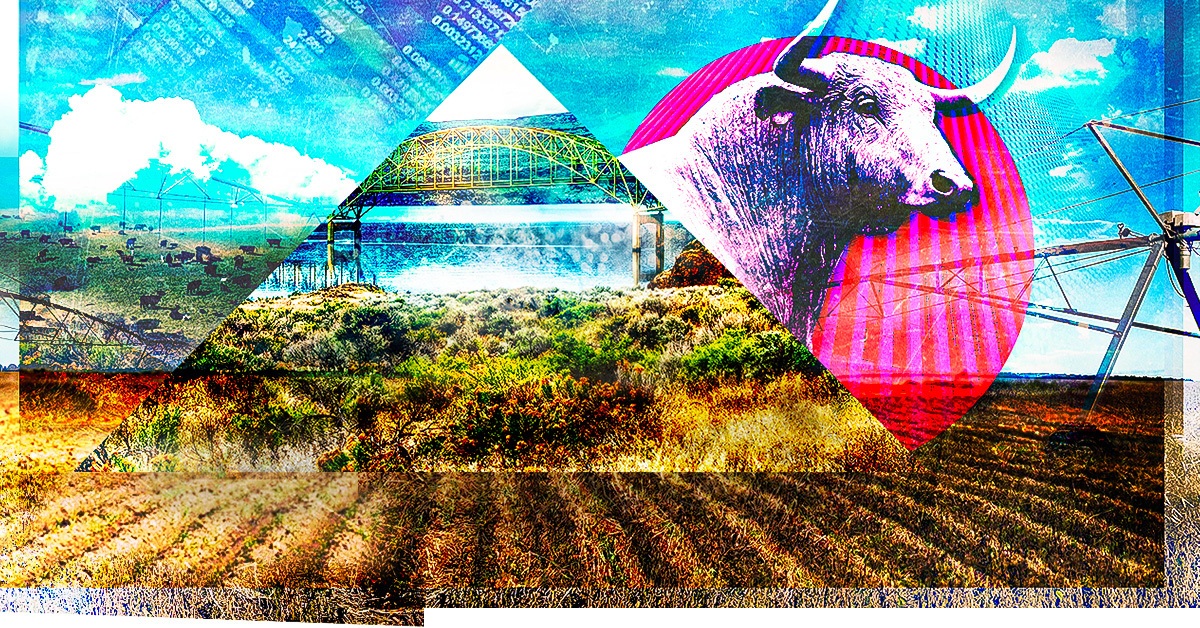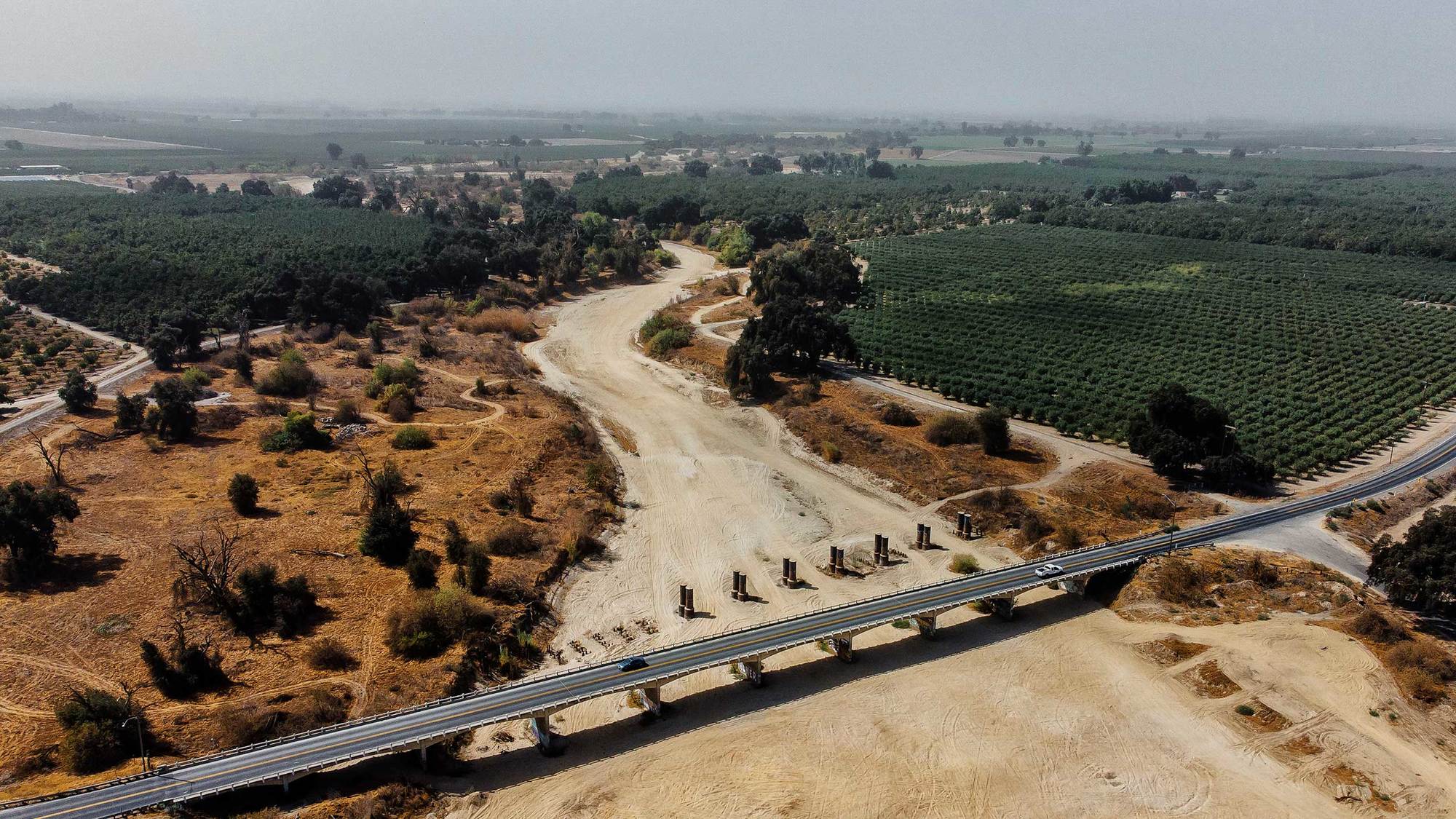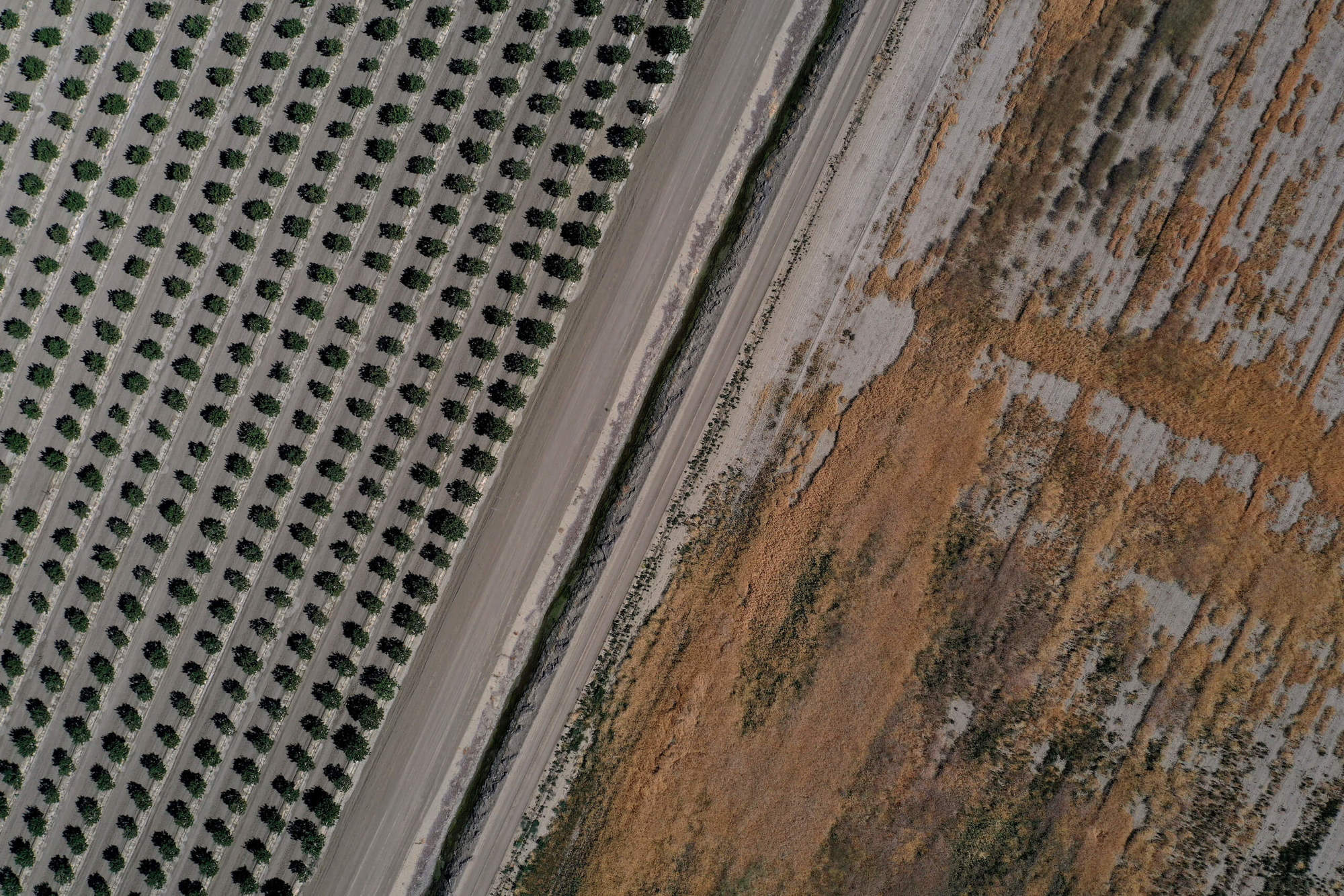
Justin Sullivan/Getty Images
Central California can’t continue to farm at its current industrial scale. As land is fallowed, what could take its place?
From above, California’s San Joaquin Valley spills out of the Sierra Nevada in a checkerboard of earth-toned farmland. It’s some of the most valuable land in the world; every year, the agribusiness industry here produces billions of dollars’ worth of milk, vegetables and nuts. But the scale, and the industrial intensity, of agriculture require an enormous amount of groundwater to be pulled out of aquifers deep belowground — more than the industry can afford to pump, according to hydrologic modeling.
This story was originally published at High Country News (hcn.org) on Feb 15, 2022.
Pictured above: An irrigation canal separates an almond orchard and a field that lies fallow in Firebaugh, California. Fallowed land could have disastrous and unequal effects on the area’s inhabitants.
According to projections from the Public Policy Institute of California, between 535,000 and 750,000 acres — around 15% of the valley’s irrigated farmland — will need to be taken out of irrigated production in order to meet the requirements of the state’s Sustainable Groundwater Management Act.
Removing irrigated land from production — fallowing the land — could have disastrous and unequal effects on the area’s inhabitants: Small farmers are less equipped to weather the impacts, and thousands of low-wage farmworkers will be put out of work. Dusty, idle land is also dangerous: It hosts pests and weeds and spreads valley fever, a fungal disease that can seriously impact high-risk individuals.
But taking that much farmland out of production and considering alternative uses for it means completely transforming the landscape — something California is starting to incentivize with a new program headed by the California Department of Conservation.
Ideas for what to do with fallowed land remain largely conceptual, but advocates are busy putting together a vision of what is possible. Some of these uses give local government agencies across the West a prototype for a different kind of future for the region’s farmland — treating the transition as an opportunity to address public health, equity and access.
Turn it into a park
“We’d really like to see land be retired around communities where there’s massive overpumping,” said Nataly Escobedo Garcia, a policy coordinator at the advocacy nonprofit Leadership Council for Justice and Accountability. In its place, Garcia advocates for what she calls a “buffer zone,” or a park. The idea is to create a dedicated ecological reserve — a sort of living donut around rural communities — designed to promote biodiversity and protect small towns from groundwater depletion and exposure to pesticides.
In many small towns in the San Joaquin Valley, wells are the primary source of water. But decades of overpumping near them has dropped the water table so low that the wells often fail. Garcia says a new land-repurposing program could provide much-needed greenspace, a safer alternative to the pesticide-laden crop fields that often abut rural towns, and, importantly, help protect vulnerable communities’ water supplies. “We want water systems to be safe, so we’d love to see land go out of production around disadvantaged towns in order to protect their drinking water for years to come,” she said.
It would also give people somewhere to go, added Garcia, pointing out that many rural towns are miles away from the nearest park. David Shabazian, the director of the Department of Conservation, which is administering a program to pay farmers to transition their land, said that early guidelines specifically point out the importance of addressing inequity. Building parks, he said, could tick many boxes.
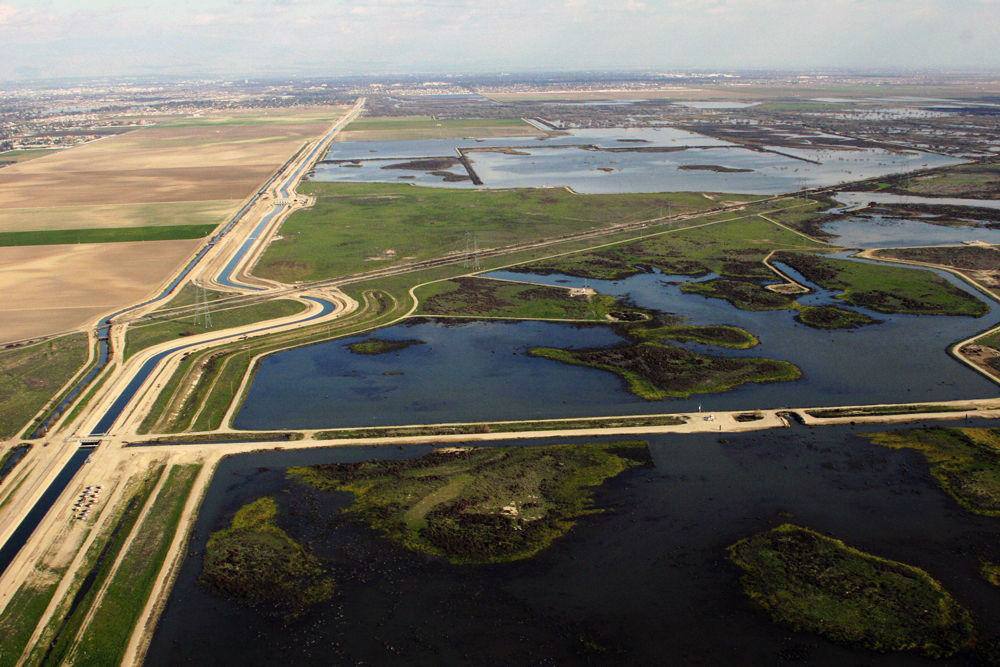
The Kern Water Bank in southwest Bakersfield, California, has 20,000 acres of groundwater recharge basins.
Kern County Water Agency
Flood it
One promising alternative to water intensive farmland involves simply constructing giant ponds — called groundwater recharge basins — strategically designed to capture and store floodwater underground. These are some of the most likely land-repurposing projects, said Ann Hayden, a policy expert at the Environmental Defense Fund, mainly because they would benefit people, the ecosystem and the broader agricultural industry. Birds and pollinators can always use the habitat, and storing water underground helps chronic depletion of groundwater, which, in turn, helps communities dependent on wells depleted by overpumping.
The San Joaquin Valley is a giant floodplain; before 19th century developers drained the marshes and diverted tributaries for agriculture, it was home to the largest lake in the West. Recharge basins absorb floodwater, create wetland habitat and address the impact of decades of groundwater mining, according to California’s Fourth Climate Change Assessment, a report intended to guide government policy on adaptation.
The assessment also predicts longer droughts, but when wet years do come, the rainfall will be more intense, and recharge basins can play a vital role in storing the water underground.
Farm it (Yes, you read that right.)
Aidee Guzman grew up in the San Joaquin Valley and now studies soil health as an agroecologist. She sees land repurposing as an opportunity, not to take farmland out of production, but rather to invest in a different type of farming.
Guzman’s research focuses on small-scale farms run by Southeast Asian refugees in the San Joaquin Valley. Her findings suggest that their techniques, which involve planting a diverse set of crops, have a wide array of ecosystem benefits. Not only do they increase the number of mycorrhizal fungi, which help distribute nutrients and decrease the need for fertilizer, the plants and fungi also improve water retention and carbon sequestration in the soil. The farming is often less water-intensive, too.
“They are farming on formerly industrially managed land. We have an enormous opportunity to farm this land differently, to rethink how this landscape can be designed.”
“They are not doing this on healthy, prime farmland,” said Guzman. “They are farming on formerly industrially managed land. We have an enormous opportunity to farm this land differently, to rethink how this landscape can be designed.”
Whatever ends up happening will be up to local governments and the communities they represent, said Shabazian. An effective land-transition process cannot not be prescriptive, he added: Rural communities, landowners and governments will decide what is best.

